One needn’t be a tech nerd to find virtual reality fascinating. As a term, virtual reality originated in science fiction and will soon be 40 years old. Film has been struggling with it for almost exactly as long, with classic narrative cinema really only ever managing to scratch its surface: men or women, or frequently also young gamers, are shown putting on high-tech VR glasses and then contorting their bodies in funny ways. But just what it is that’s moving them and eliciting these motor reactions simply can’t be adequately portrayed in a traditional cinematic projection.
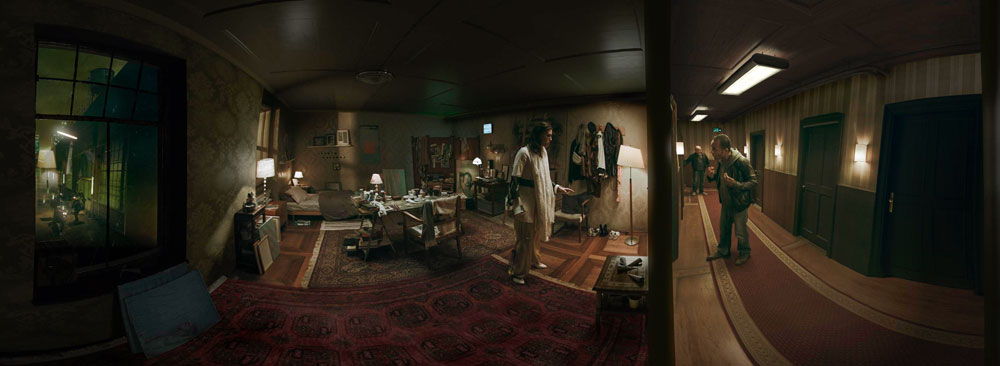
It’s for this reason that “When Film Leaves the Screen” (Wenn das Kino die Leinwand verlässt) was chosen as the programmatic title of a VR emphasis that Eva Fischer compiled recently for the film festival Diagonale. Fischer—an art historian and head of the sound:frame network—appeared for the third time at this festival in Graz to introduce current VR projects and discuss topics including storytelling in three-dimensional space and the general future of immersive filmmaking together with representatives of well-regarded institutions (Creative Industries Styria, the Institute of Design and Communication of the university of applied sciences FH Joanneum, etc.).
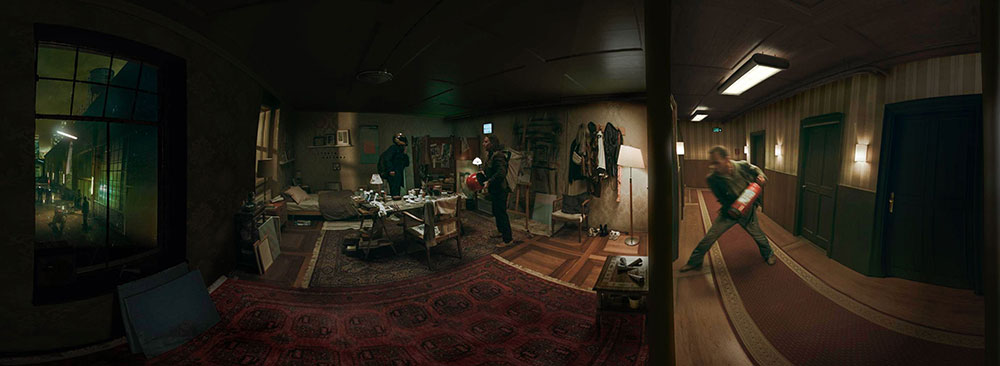
“A lot comes from the fi eld of fi lm, a lot comes from theatre, and even so: it’s very much its own thing,” is how curator Fischer sums up recent developments. “I think it’s interesting just what all is going on right now and how fast things are also changing. Three years ago, the discourse was dominated by the question, ‘Will VR supersede film?’ But no, it won’t. By now, it’s plain to see that this is a new medium that offers different possibilities than do feature films, which run as finished products lasting 90 minutes—and they differ even just due to how every individual who puts on such a pair of glasses perceives things differently and thus also more or less influences the content.”
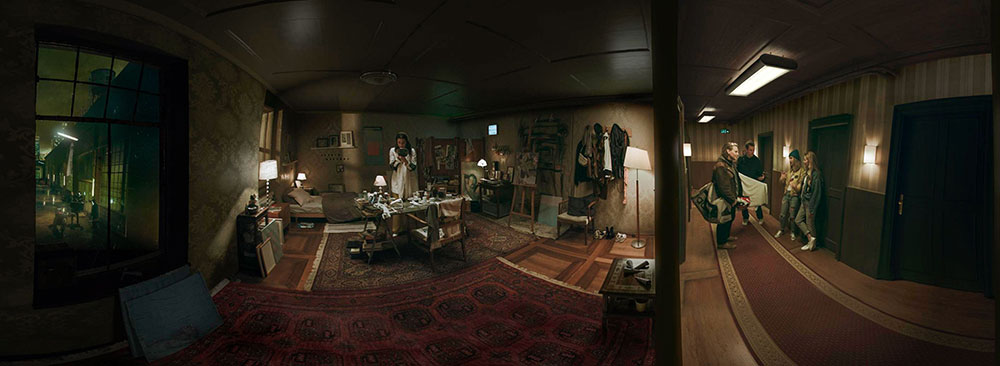
The illusion of being in another—virtual—space is “definitely very real”, says Lena Weiss in description of her first VR experience. “I was standing in a castle, hundreds of metres above the ground. I then tried to take a step forward, but I just couldn’t do it. Your body just no longer gets the fact that you’re still in your living room with the floor solidly beneath your feet.” It was together with director Béla Baptiste and cameraman Alexander Dirninger from Film Academy Vienna that Film Academy production student Lena Weiss realised the VR film Fluchtpunkt. This project began at the postproduction company Vienna FX, but most of the people and equipment involved came from the University. “It was a win-win situation,” says Dirninger: “We spent forever looking for suitable locations and only discovered by chance that the scenery that was set up in the studio right then totally matched what we wanted to do. To express our thanks for letting us film there, we gave a lecture later on to explain what we’d done—as far as I know, nobody had ever done anything with VR at the Film Academy before us.”
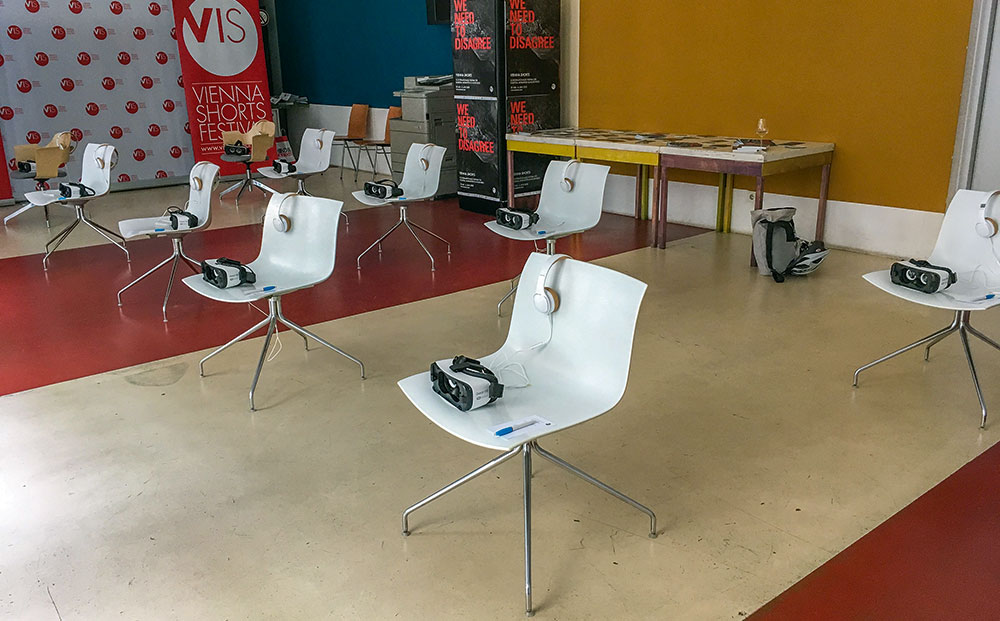
Although VR presentations are, of course, more elaborate and expensive than classic projections, VR films like Fluchtpunkt are becoming increasingly popular at film festivals, as well. The plot of this pioneering seven-minute work—which, alongside Diagonale and other festivals, was also shown at Vienna International Shorts, the 360-Grad-Festival, and the Shortynale—is quickly told. Viewers find themselves at the precise vanishing point between four spaces in which different things play out in parallel. The artist Carlotta (Dolly Lewis) prepares for an exhibition opening at her flat. In the hall out front, her ex-boyfriend paces furiously back and forth. The guests at the gallery wait for the artist to arrive. And in a back courtyard, two fleeing robbers discover a window—which leads into Carlotta’s flat.
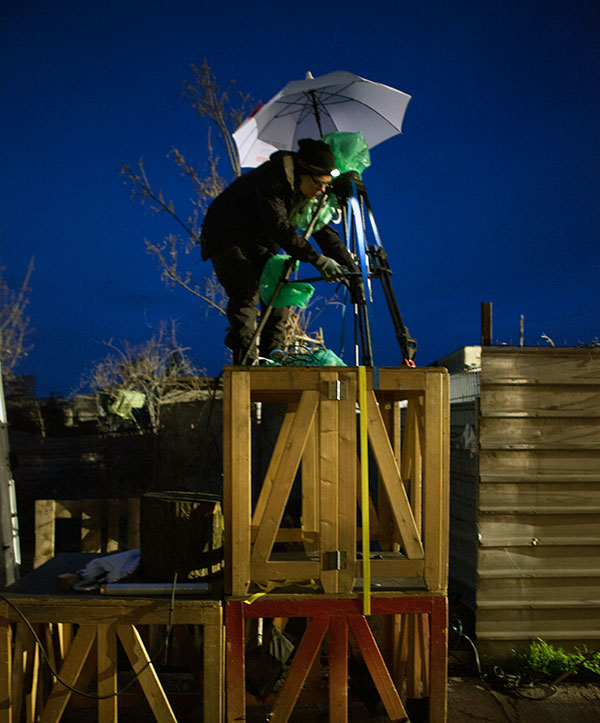
“The four spaces were filmed separately in four long takes, but in order for the story to work, their timing had to be precisely matched,” explains Béla Baptiste. “The special thing about this film is that, when watching it, I can freely turn around 360° and peer into each of these four interconnected scenarios. So while there’s a story—a thoroughly classic one, at that—the audience members decide themselves when to look where, in effect doing their own editing.”
The soundtrack is quite intricate and done to facilitate sound localisation: whatever happens within your field of vision is louder, while you’re less able to understand or instantly perceive every word or sound that comes from behind you—just like in real life. So it’s all the more strongly, says Lena Weiss, “that in the virtual space, you get the feeling that what’s behind you actually is behind you. And horror-related stuff, I think, also works extremely well when it’s done like this.”
Lacking any experience in this field, the team had to employ all of its creativity, says filmmaker Baptiste, who’s become very enthusiastic about virtual reality and is now preparing a new project from his home base in New York. He feels that VR’s greatest potential in film lies in art films and documentaries: “The immersive image allows the viewer to be on a mountaintop in Peru, for instance, in a way that a flat screen can never make possible.”
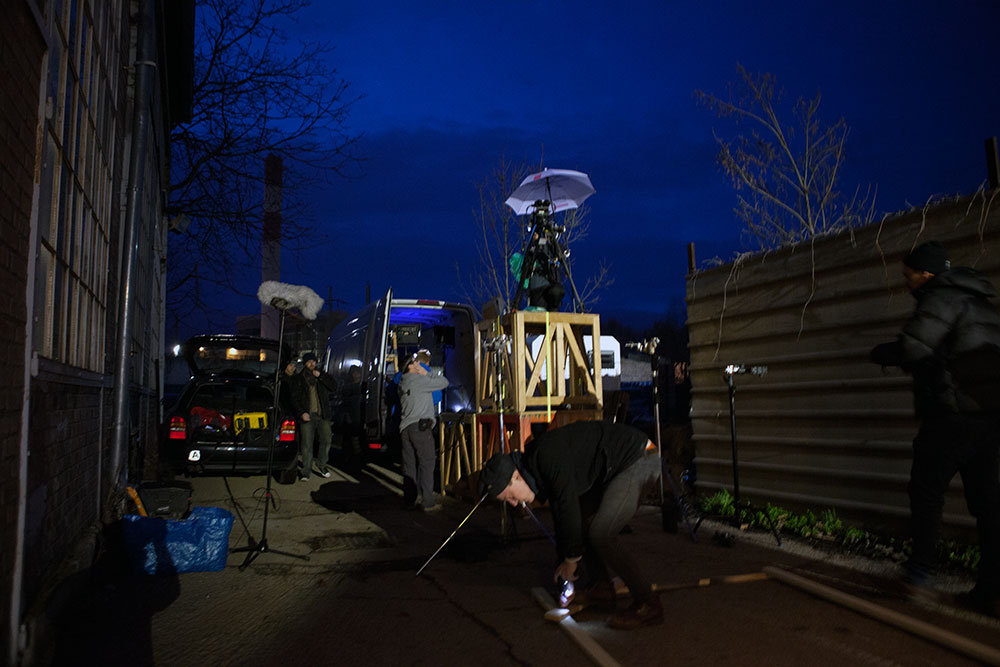
In actual fact, VR films work less with identification than they do with haptic experience—like the experience of being of a different gender, of a different skin colour, or from a different cultural sphere. And in this context, VR has been referred to as an “empathy machine”. As an example, Eva Fischer mentions Remain at Home by GO! Pictures, in which a grandmother attempts to flee a region in crisis together with her grandson while bombs fall all around them. Or Sebastian Brauneis’s current work Inside Lieutnant Gustl, which constantly switches its audience back and forth between an outward impression of the (anti-)hero of Schnitzler’s None but the Brave and his inner perspective: from a polished outer surface to a considerably less appealing inner world and all the way back again.

